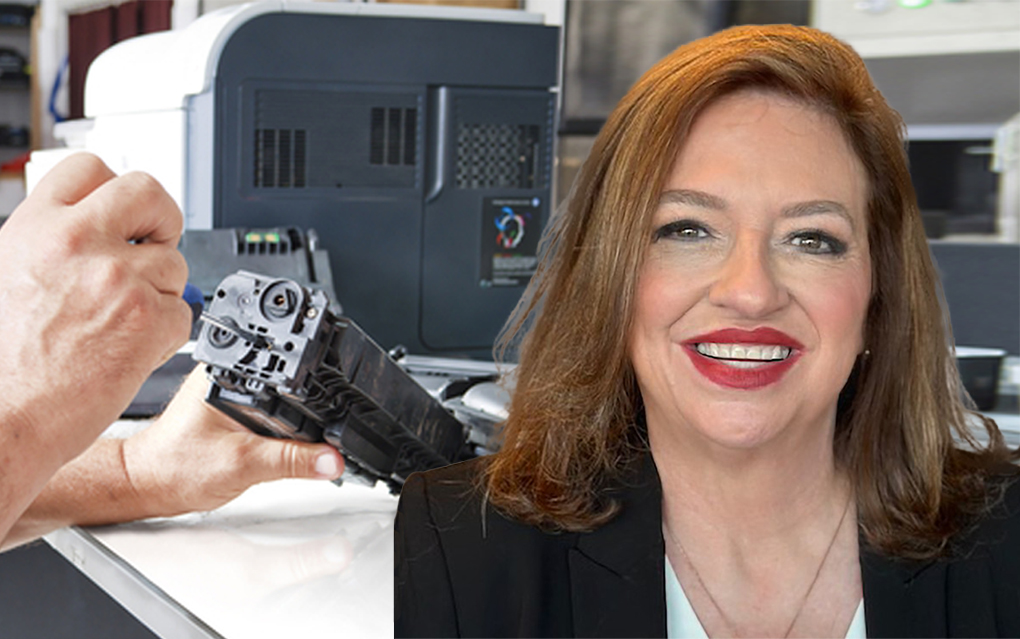Quocirca: The Future of Document Capture Will be AI-Driven
Quocirca: The Future of Document Capture will be AI-Driven
Corporate digitization strategies will see scan volumes rise and print volumes fall in the coming year as businesses speed up the transition to a ‘less-paper’ environment. Quocirca’s latest research, “The Future of Document Capture 2024”, finds that 75% of organizations are accelerating paper digitization initiatives to achieve sustainability, efficiency, and security goals.

Artificial Intelligence (AI) will drive increasing value for document capture, with 78% of organizations saying it will be an investment focus for 2024. The main areas where respondents expect to find AI useful in relation to document capture are workflow automation/intelligent document processing (31%), along with form recognition and data extraction improvements (27%).
Key research findings also include:
- Respondents expect print volumes to fall by an average of 3% in 2024, with larger drops expected in small to medium businesses (6%) and the public sector (9%).
- Scan volumes are expected to rise by 6%, driven by large enterprises (8%) and the business and professional services sector (8%).
- 11% of organizations say they are totally paperless and a further 52% have digitized most processes. 6% have only just started digitizing processes and 2% remain dependent on paper.
- 78% of organizations will prioritize AI and machine learning in 2024, 69% will increase investment in cloud document capture, 64% will invest in robotic process automation (RPA), and 63% will invest in intelligent document processing (IDP).
- 51% indicate that paper digitization will be critical to their digital transformation by 2025, a rise from 9% who say it is critical today.
Louella Fernandes, CEO of Quocirca, comments: “The fast-rising interest in AI-powered digitization and workflow automation represents a significant opportunity for document capture hardware and software vendors. Common objections to digitization, such as client preferences for paper, the need for physical signatures, and hard copy retention for legal reasons, are fast becoming obsolete as elegant, secure digital solutions achieve widespread adoption. As digitization shifts from ‘nice-to-have’ to business-critical, vendors that offer the right solutions at the right price are likely to be pushing at an open door.”
Barriers to digitization
Barriers to digitization remain. Cost is the most common issue, stated as a barrier for 35%. This is followed by the time it will take to implement solutions, the challenge of integrating systems, and the equipment/software needed (all 29%).
Quocirca’s research shows that digitization maturity varies between business functions and processes. Payroll is fully digitized in 54% of organizations, and partially digitized in a further 38%. At the other end of the scale, only 28% have fully digitized their mailroom. Client-facing processes such as onboarding, customer contracts, and customer communications are more likely to be already fully or partially digitized. In contrast, legal documents and inbound accounting processes such as goods receivable are slightly less likely to be digitized.
Louella comments: “We see variations across business size and sector in the frequency and maturity of digitization. Different verticals are seeking different scanning and workflow automation features. Therefore, vendor messages must be tailored accordingly. Vendors must ensure that they understand where their customers are on the journey and help them build business cases that quantify the outcomes of digitization, aligning the achievable results to business goals such as sustainability, efficiency, and security.”
An increase in scanner use presents opportunities
MFP scanning is currently the most common method of document digitization, with 65% saying they use it regularly. It is also the method expected to show the most growth, with respondents predicting an increase of 7.39% in the coming year. Mobile scanning is expected to grow by 6.77%, partly driven by the considerable improvements to mobile scanning software in recent years. Office workgroup scanning is expected to grow by 4.68%.
The increased focus on scanning has implications for its position within MPS contracts. The majority of organizations (54%) report that they use an MPS, and 81% of those say scanning is part of their contract. Currently, only 12% use a cost-per-scan contract. However, 49% indicate they are very interested in this approach, while very few show no interest.
Louella continues: “Scanning has perhaps been viewed as a peripheral feature of MPS contracts in the past, but as it becomes central to digital transformation, vendors must ensure customers place appropriate value on it and can control costs appropriately.”
She concludes: “Suppliers with products across print and scan categories can capitalize on the opportunity to extend their digital workflow integration service offerings and participate in a broader digital ecosystem that comprises hardware, software, and services. This is a further swing away from transactional engagements to a more business process-orientated and consultative approach. A mix of different hardware and software capabilities will be needed, combined with a far more open approach to the rest of the enterprise software, collaboration, and workflow systems already in use within organizations.”
Quocirca’s “The Future of Document Capture Report 2024” contains a detailed analysis of trends in workplace adoption of digitization, scanning, applications of AI, and recommendations for vendors in this space.
Related:
- Quocirca Finds Significantly Different Opinions About AI Adoption
- Quocirca: Print Industry Poised for Change in 2024
- Quocirca: Print Industry Vendors Are Accelerating Sustainability Strategy
- Quocirca: Cloud Print Adoption Growing More Complex
Comment:
Please leave your comments below for the story “Quocirca: The Future of Document Capture will be AI-Driven.“





Leave a Comment
Want to join the discussion?Feel free to contribute!